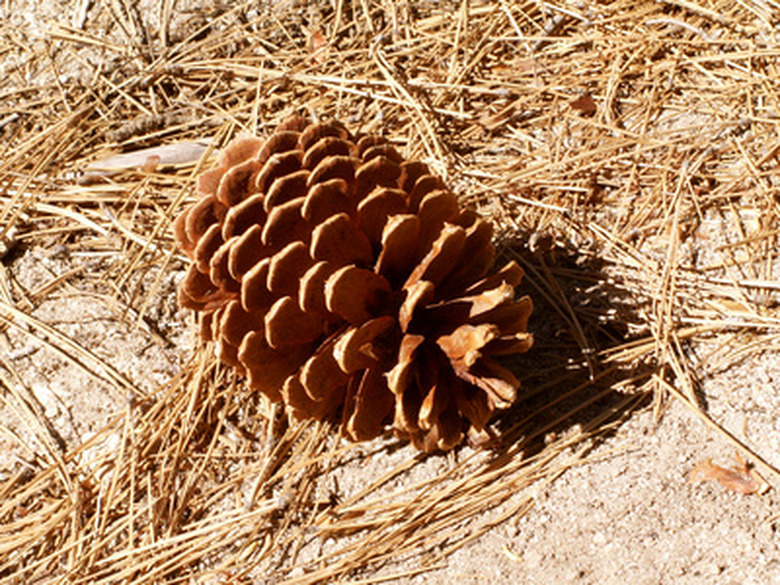Similarities & Differences Between Cones & Flowers
Cones and flowers look completely different, but they have more similarities than you may think. They are both produced by trees and both generate seeds for reproduction. But trees that produce flowers do not produce cones, and vice versa. Furthermore, the reproductive processes involving cones and flowers are not the same.
Trees
Trees
Cones are only produced by gymnosperms, which are coniferous trees like spruce, hemlock and pine. Flowers are produced by angiosperms. Angiosperms may be divided into dicots and monocots. Almost all deciduous trees, like maple and oak trees, as well as vines and bushes are dicots, and produce flowers. Flowers are also produced by vegetation other than trees. Monocots, which are most of the grasslike species and plants like lilies, irises and orchids, also produce flowers.
Appearance
Appearance
Flowers and cones have quite different structures. Cones when mature have an almost woody texture; they are elongated and are made up of scales. Flowers have colorful petals, sepals (which are leaves below the petals), and both male and female reproductive portions, called the stamens and pistils, respectively.
Just as not all flowers look the same, nor do all cones. For example, a hemlock cone is relatively small with a rosette shape and compact scales. The white pine cone is much bigger, woodier and has scales that project outward. Even with deciduous trees, not all flowers look alike. Apple tree blossoms are showy and pinkish-white, but the flowers from maple, oak and sycamore trees are less obvious and smaller, says the University of California's Museum of Paleontology.
Reproduction
Reproduction
Both cones and flowers produce seeds and are used for reproduction. However, the reproductive processes differ.
Gymnosperms or coniferous trees produce both male and female cones. The male cones release pollen which is carried by the wind to a female cone. A pollen tube is formed and pollen is transferred to fertilize the female cone's egg. This fertilization develops into a seed. Each scale of a pine cone encases a seed. Scales fall to the ground and seeds are then able to germinate.
Flowers have both male and female reproductive parts. The stamen is the male portion and is made up of the anthers, where pollen is produced, and filaments. The female portion is called the carpal and comprises the stigma, style and ovary. Pollen from the male is carried by pollinators, like bees and butterflies, unlike only the wind carrying cone pollen. Sometimes flowers self-pollinate as well. The pollen sticks to the stigma. Just like with conifers, a pollen tube is formed, and the pollen is transferred to the ovary to fertilize an egg. This fertilization develops into a seed.
